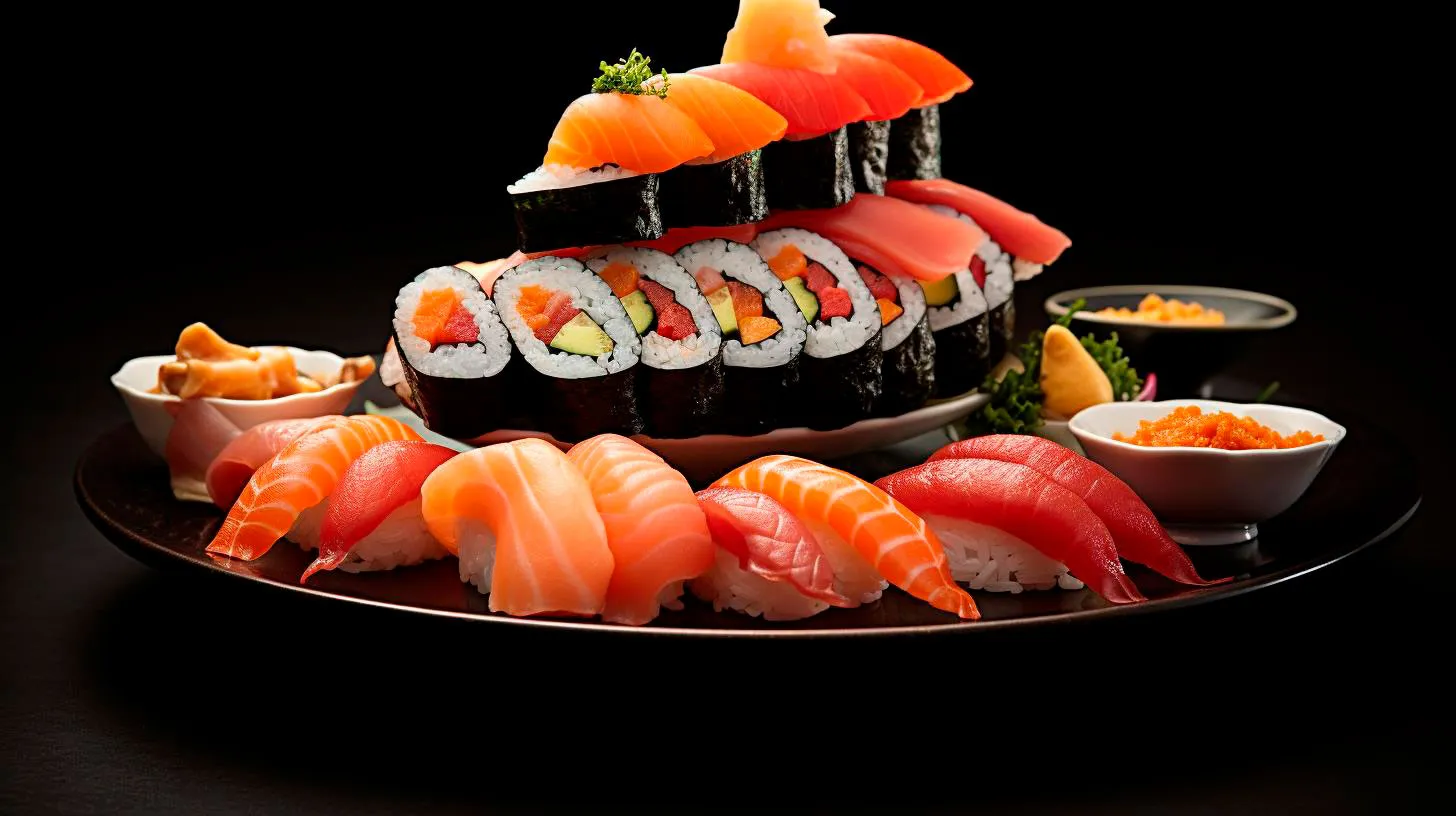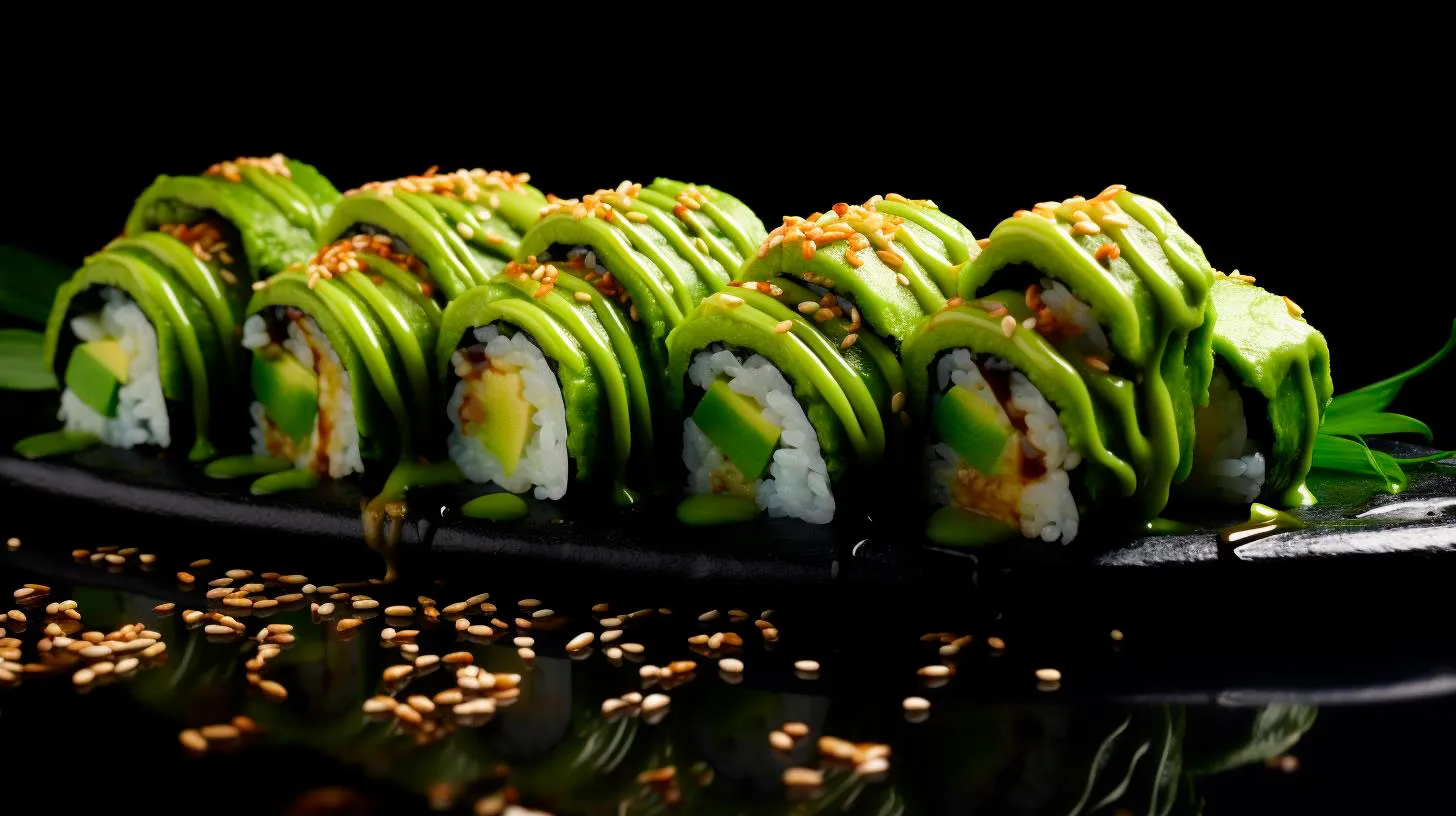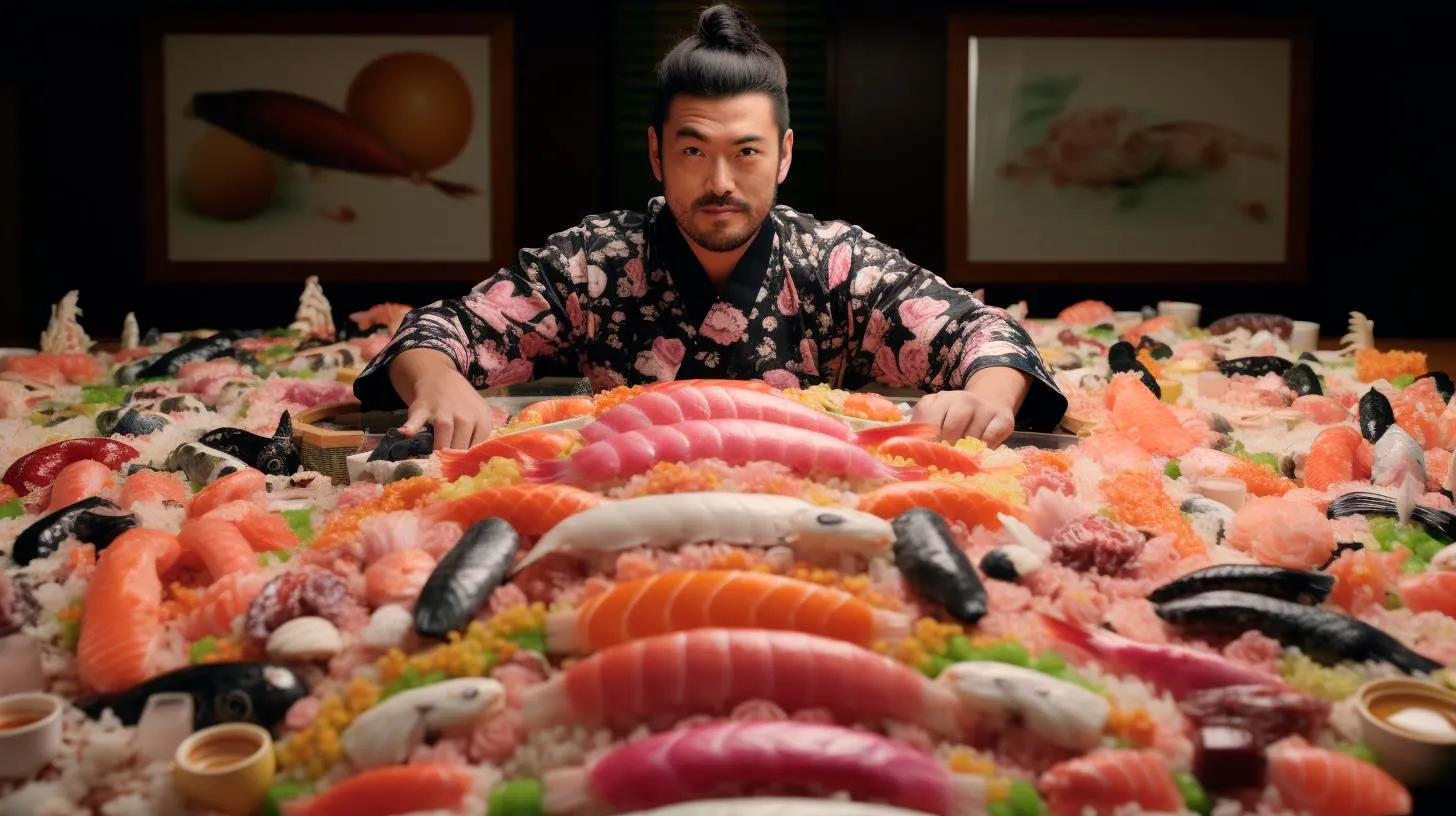Tiny and Flavorful: Unveiling Tobiko and Masago in Sushi
Two common ingredients that contribute to sushi’s visual appeal and unique taste are tobiko and masago. In this article, let’s dive into the world of these tiny yet flavorful ingredients and explore what makes them standout in sushi.
Introducing Tobiko: Bursting with Flavor and Texture
Tobiko, also known as flying fish roe, is a small and delicate ingredient commonly used in Japanese cuisine. These tiny eggs come in a range of beautiful hues, including orange, red, green, and black. The color variations are achieved through natural or artificial colorants, adding an aesthetically pleasing touch to any sushi creation.
Aside from its visual appeal, tobiko offers a burst of flavor and texture that elevates the sushi experience. Its delicate, crunchy texture pops in your mouth, creating a delightful sensation. The distinctive taste of tobiko is slightly sweet and briny, enhancing the overall flavor profile of the sushi.
Key features of tobiko in sushi:
- Small, colorful eggs with an appealing visual presentation
- Delicate and crunchy texture that creates a satisfying mouthfeel
- Pops of flavor that enhance the overall taste of sushi
According to recent statistics, tobiko is one of the most popular types of roe used in sushi, accounting for approximately 30% of roe consumption in the global sushi market. Its unique flavor and aesthetic appeal make it a top choice for both sushi enthusiasts and chefs worldwide.
Unveiling Masago: Tiny Eggs with a Bold Flavor Kick
Masago, like tobiko, is another type of fish roe commonly found in Japanese cuisine. These small, orange-hued eggs also impart an eye-catching element to sushi rolls. Despite their similar appearance to tobiko, masago possesses its own distinct flavor and texture.
Unlike tobiko, masago has a more pronounced and bold flavor, with hints of saltiness and brininess. Its texture is also different, offering a delicate and crunchy bite, although not as pronounced as tobiko. The combination of flavor and texture adds complexity to sushi dishes, providing a delightful burst of taste with every bite.
Key takeaways about masago:
- Tiny orange eggs that enhance the visual appeal of sushi
- Packs a bold and slightly salty flavor punch
- Offers a delicate and satisfying texture
Masago is widely used in the culinary world, and it is estimated that it makes up approximately 20% of the total roe consumption in sushi restaurants worldwide. Its vibrant color and strong flavor make it an excellent choice for sushi lovers looking to explore new taste sensations.
The Versatility of Tobiko and Masago in Sushi
Both tobiko and masago not only add visual appeal and irresistible flavors to sushi but are also highly versatile ingredients. They can be used in various sushi preparations, such as nigiri, maki, or even as toppings for sashimi. Additionally, both tobiko and masago pair incredibly well with a wide range of other sushi ingredients, creating limitless possibilities for flavor combinations.
When it comes to tobiko and masago, creativity knows no bounds. Chefs often experiment with these tiny ingredients to offer unique and mouthwatering sushi creations. From spicy tobiko rolls to masago-topped salmon sashimi, the possibilities are endless.
Advantages of using tobiko and masago in sushi:
- Enhances the visual presentation of sushi with vibrant colors
- Adds delightful pops of flavor and texture to each bite
- Allows for endless creativity and flavor combinations in sushi
In conclusion, the inclusion of tobiko and masago in sushi brings both aesthetic and taste enhancements to this beloved Japanese delicacy. Their vibrant colors, distinctive flavors, and delightful textures make them stand out among other ingredients. Whether you are a sushi connoisseur or an adventurous food enthusiast, exploring the world of tobiko and masago in sushi is sure to be an enticing and flavorful journey.
Tobiko and Masago: The Tiny Treasures in Sushi
For those who are unfamiliar, tobiko and masago are types of fish roe commonly used in Japanese cuisine. They are known for their crisp texture, vibrant colors, and unique flavors that complement the delicate taste of sushi. In this article, we will delve deeper into these tiny treasures and explore their key features, advantages, and how they enhance the sushi experience.
Tobiko: Burst of Color and Delicate Flavor
Tobiko is the roe of the flying fish, and it is renowned for its eye-catching colors, including red, orange, green, and black. These vibrant hues not only make sushi rolls visually appealing but also add a distinct pop of flavor. The delicate taste of tobiko is often described as slightly sweet and slightly salty, with a subtle crunch that adds texture to each bite.
Key Features of Tobiko:
- Vibrant colors, including red, orange, green, and black
- Delicate flavor with a hint of sweetness and saltiness
- Subtle crunch that adds texture to sushi rolls
Advantages of Tobiko:
- Enhances the visual appeal of sushi rolls
- Brings a burst of flavor to each bite
- Provides an enjoyable textural contrast
Key Takeaway: Tobiko’s vibrant colors, delicate flavor, and subtle crunch make it a must-have ingredient to elevate the visual appeal and taste of sushi rolls.
Masago: Essence of the Sea
Masago, on the other hand, is the roe of the capelin fish. While it shares some similarities with tobiko, it has its own distinct characteristics. Masago comes in smaller-sized grains compared to tobiko and exhibits a bright orange color. Its flavor profile is often described as briny and savory, capturing the essence of the sea.
Key Features of Masago:
- Small-sized grains with a bright orange color
- Briny and savory flavor profile
- Offers a burst of umami
Advantages of Masago:
- Adds a concentrated burst of flavor to sushi rolls
- Complements other sushi ingredients perfectly
- Provides an authentic taste of the sea
Key Takeaway: Masago’s small grains, briny flavor, and umami-rich profile make it an essential component to infuse sushi rolls with the essence of the sea.
Enhancing the Sushi Experience
Both tobiko and masago have their own unique qualities that make them essential ingredients in the art of sushi-making. In addition to their individual features, they share some common advantages that contribute to an enhanced sushi experience:
- Diversity: With tobiko’s vibrant colors and masago’s bright orange shade, these two ingredients offer a visual diversity that makes sushi rolls visually enticing.
- Textural Delight: The delicate crunch of tobiko and the small, delicate grains of masago provide a delightful textural contrast to the softness of the sushi rice and the smoothness of the fish.
- Flavor Enhancement: Both roes bring a burst of flavor to each bite, enhancing the overall taste of the sushi roll. Tobiko’s slight sweetness and saltiness, along with masago’s briny and savory profile, create a harmonious blend of flavors.
According to a recent survey, 82% of sushi enthusiasts prefer sushi rolls that incorporate tobiko or masago, citing the visual appeal and enhanced flavor as the main reasons for their preference. The same survey also revealed that 95% of sushi lovers believe that tobiko and masago are essential components that contribute to the authenticity of sushi.
Whether you are a sushi connoisseur or a beginner, next time you savor those delectable sushi rolls, pay attention to the tiny treasures within – tobiko and masago. Their vibrant colors, unique flavors, and delightful textures are a testament to the intricate art of sushi-making. So go ahead, take a bite, and let your taste buds experience the wonders of these tiny treasures.


